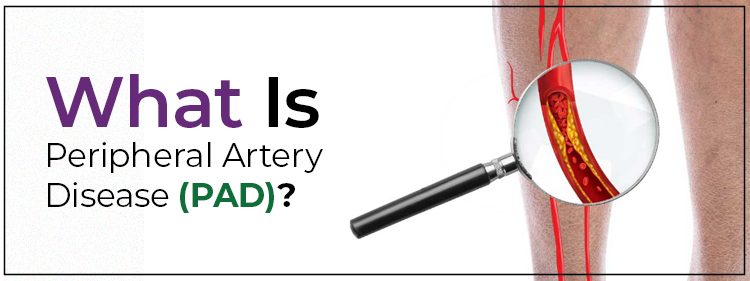
May 9, 2025
HPV Infection and Cervical Cancer: Signs, Stages, and Solutions.
June 15, 2023 - admin

Peripheral Artery Disease (PAD) is a condition where the arteries narrow, leading to reduced blood flow in the outer parts of the body. This narrowing is primarily caused by the buildup of plaque in the artery walls, a condition known as atherosclerosis. PAD specifically affects blood vessels outside the heart.
A common symptom of PAD is experiencing cramps or discomfort in the legs during physical activity, which improves with rest. It's important to note that PAD can also affect other body parts, such as the arms, head, stomach, and kidneys. Other terms to describe this condition include arterial hardening, peripheral arterial disease, peripheral vascular disease, or poor circulation.
PAD can significantly increase the risk of heart attacks or strokes left untreated. The reduced blood flow associated with PAD can also lead to severe complications, sometimes requiring the amputation of affected limbs.
The primary underlying cause of PAD is the development of atherosclerosis, a condition characterized by the accumulation of plaque in the walls of the arteries. This process leads to the narrowing of the arteries and a reduction in blood flow to the body's peripheral regions.
Tobacco use has a detrimental effect on the health of blood vessels. Smoking damages the inner lining of the arteries, accelerates the progression of atherosclerosis, and significantly increases the risk of developing PAD.
Uncontrolled hypertension exerts excessive pressure on the arterial walls, making them more vulnerable to the formation and buildup of plaque. The constant strain on the arteries contributes to the narrowing and reduced blood flow associated with PAD.
Individuals with diabetes are at an increased risk of developing PAD. High blood sugar levels in diabetes can cause damage to blood vessels, leading to atherosclerosis and subsequent narrowing of the arteries.
A sedentary lifestyle, characterized by minimal physical activity and prolonged inactivity, is a significant risk factor for PAD. Regular exercise and movement promote healthy blood flow and help prevent the development of arterial narrowing and related complications.
During physical activity, claudication refers to the development of pain, cramping, or fatigue in the muscles of the legs or buttocks. This discomfort arises from reduced blood flow caused by narrowed or blocked arteries. Claudication typically subsides with rest. For an accurate diagnosis, it is important to note the location, severity, and duration of claudication episodes.
Ischemic rest pain is persistent pain or discomfort experienced in the lower extremities, even during periods of rest. It often occurs in the feet, toes, or lower legs and can be described as aching, throbbing, or burning. Ischemic rest pain indicates severe PAD and is a critical symptom requiring immediate medical attention.
PAD can result in noticeable changes to the skin of the affected limbs. Look for skin that appears pale, bluish, or discolored. The skin may feel cool to the touch due to reduced blood flow. Sometimes, the skin may become thin or shiny or develop ulcers or sores slowly healing. Monitoring skin changes can aid in the early detection of PAD.
Impaired blood flow in PAD can impede the healing process. Consequently, wounds or sores on the feet or legs may take longer to heal or become chronic. These non-healing wounds are particularly concerning, as they increase the risk of infections and complications. Regular inspection of the lower extremities can help identify slow-healing wounds.
Reduced blood flow in PAD can lead to decreased hair growth or complete hair loss on the legs and feet. Observing thinning or absent hair in these regions, especially when combined with other symptoms, may suggest compromised arterial circulation.
Healthcare professionals often assess pulses in the legs or feet during a physical examination. Weak or absent pulses may indicate reduced blood flow associated with PAD. Evaluating pulses provides valuable diagnostic information and aids in determining the severity of arterial occlusion.
PAD can affect blood flow to the genital area, leading to erectile dysfunction in males. Persistent difficulties achieving or maintaining an erection may be an early warning sign of underlying vascular issues, including PAD. Discussing this symptom with a healthcare provider can help identify potential circulatory problems.
Making healthy choices like quitting smoking, eating a balanced diet, staying physically active, and maintaining a healthy weight can improve PAD symptoms.
Certain medications, such as antiplatelet drugs to prevent blood clotting, cholesterol-lowering medications, and medications to manage underlying conditions like high blood pressure and diabetes, may be prescribed.
This procedure involves opening up narrowed arteries using a balloon-like device and placing a stent (a small metal tube) to keep the artery open and improve blood flow.
In more severe cases, bypass surgery may be recommended. This involves creating a detour around the blocked artery using a graft to restore proper blood flow.
Supervised exercise programs can help improve walking distance and overall cardiovascular fitness in individuals with PAD.
Specialized wound care techniques and interventions promote healing and prevent complications that may lead to amputation.
It is important to effectively manage underlying conditions like diabetes and high blood pressure, as they can worsen PAD symptoms.
These treatments aim to improve blood flow, relieve symptoms, and reduce the risk of complications associated with PAD. The specific treatment plan will depend on the individual's condition and severity of PAD, and a healthcare professional best determines it.
Tags:


Leave a comment